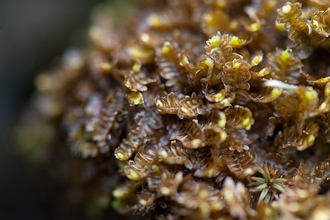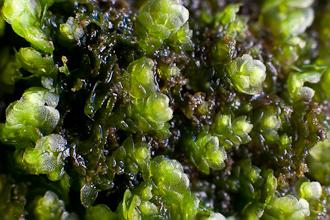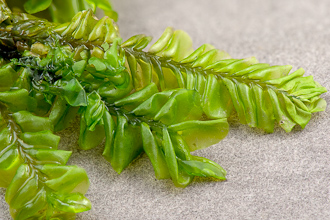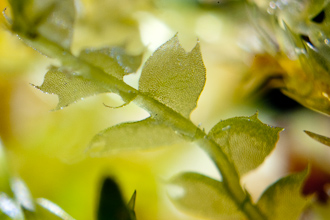
-
Thalloid plant body
-
Plant growth habit
-
Arrangement of the leaves
-
Distichous
Distichous:
With two rows of leaves in one plane. - Three rows of leaves
-
Transverse leaf insertion
Transverse:
With leaves coming off at right angles to the stem. -
Incubous
Incubous:
Leaves overlapping, the forward edge of each leaf lying on top of the back edge of the leaf in front of it. -
Succubous
Succubous:
Leaves overlapping, the upper part of each leaf covered by the base of the next higher one. - Leaves widely-spaced along length of shoot
-
Details of the leaves
-
Reproductive structures
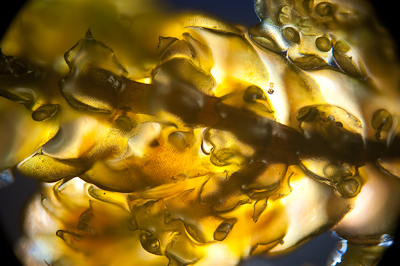
Many leafy liverworts have two rows of leaves opposite one another, and a third row of smaller underleaves borne below. The liverwort here is viewed from below in a mix of transmitted and reflected light, showing the complex outline that can result from the shape and folding of the various leaves on the shoot.
A comparison of these liverwort pages with those dealing with mosses shows that I have much more work to do to make the character lists for liverworts more comprehensive. I've also noticed that their characters are more difficult to categorise into more or less mutually-exclusive groupings, compared to the case of mosses. This is perhaps in part a reflection of the distinct evolutionary trajectories taken by the mosses and the liverworts.
- Diplophyllum albicans
- Frullania tamarisci
- Lophocolea bidentata
- Plagiochila asplenioides
- Plagiochila spinulosa
- Frullania dilatata
- Marsupella sp.
- Calypogeia sp.
- Radula complanata
- Jungermannia excertifolia
- Plagiochila asplenioides
- Plagiochila spinulosa
- Scapania nemorea
- Lophocolea bidentata
